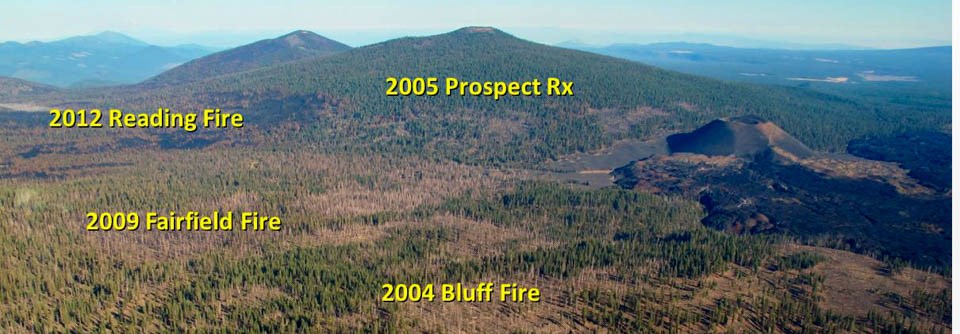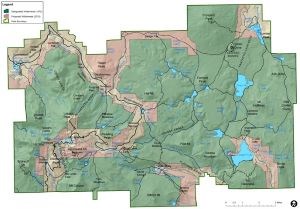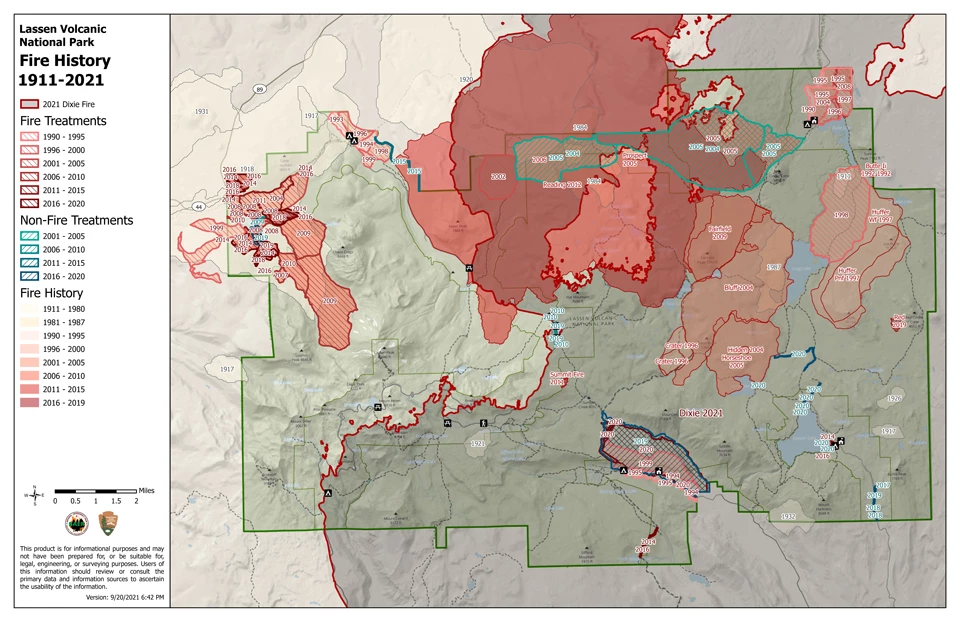
NPS/Calvin Farris Fires in Lassen Volcanic National Park have been recorded since 1911. Some fire history prior to this date has been revealed by research on burn scars in tree rings. These data provide a baseline for fire frequency prior to start of recorded fire suppression activities that began in 1905. The historic fire regime within the park was classified as mixed severity and occurred every 5 to 15 years, depending on elevation and forest type. 
Fire in WildernessIn 1972, Congress designated 74% of the park as Lassen Volcanic Wilderness. The majority of the park, with the exception of road corridors and adjacent developed areas, must now be managed to preserve wilderness character. While largely undeveloped, some natural conditions within the Wilderness Area showed the result of fire suppression efforts instituted in 1904. Forests experienced changes in tree type and density as a result of human-caused changes to the occurrence of natural wildfire. In the 1980s, the park began to use minimal intervention to allow natural ecological processes to occur within Wilderness, including wildfire and regeneration. Learn more about fire in Wilderness across the NPS. Lassen Volcanic Wilderness Fire HistoryLightning-ignited fires promote the natural quality of Wilderness by allowing ecological systems to occur with minimal effects of modern civilization. In 1984, Lassen Volcanic managed its first fire within designated Wilderness. Firefighters monitored the lightning-ignited Badger Fire until it spotted across the park boundary and outside of Lassen Volcanic Wilderness. The fire's expansion into the bordering Lassen National Forest resulted in the transition to a collaborative suppression strategy. Suppression ultimately limited fire activity within park Wilderness. While determined necessary for this fire, suppression of naturally-ignited wildfire degrades the untrammeled quality of Wilderness as this intentional manipulation of the environment stops natural processes that would otherwise occur. Wildfires in Lassen Volcanic Wilderness 1984-2021
*Acreage within Lassen Volcanic; does not reflect acreage outside the park. Significant Fires from Recent History2021 Dixie FireThe Dixie Fire reached 100% containment on October 26, 2021 with a total size of 963,309 acres including 73,240 acres within the park. The Dixie Fire is the largest fire in park history. 2012 Reading FireThe Reading fire was caused by a lightning strike on July 23, 2012 after a storm passed through the area. The fire was fully contained on August 22, 2012. The fire size totaled 28,079 acres, of which 16,993 acres are on NPS lands, 11,071 acres on US Forest Service lands, and 75 acres on private lands. Not all of the vegetation in the fire area burned and some areas did not burn at all. The resulting pattern of green vegetation and burned vegetation is called a mosaic. No structures were lost, and one injury was reported. View photos from the Reading Fire on Flickr. |
Last updated: October 3, 2022

